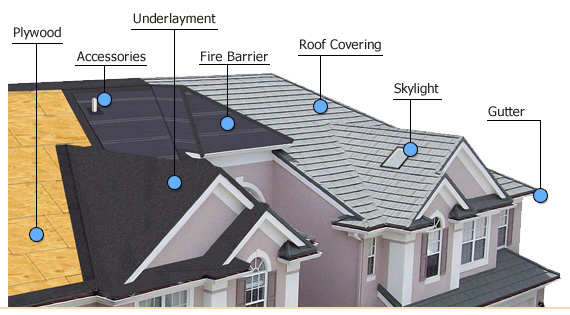There are several types of flat roofing systems, as well as several different manufacturers. Learn more about the flat roofing systems and how they are installed.

Tile
Classic
Tile roofs provide a way to give a community the same basic look, while still allowing the buildings to retain some indivuality. Tile roofs, just like most roof coverings, come in many profiles and colors.
Shingle
Cost Efficient
Shingle roofs come in different profiles as well as different colors. They are usually the most cost efficient way to go when installing a new roof, but in the Florida sun they wear quicker than a metal or tile roof.
Metal
Efficient
Metal roofs can be installed on commercial as well as residential roofs. They can be very efficient in saving on an electric bill as well as being very light weighted roofs on the building.
Metal Tile
Versatile
There are many manufacturers of metal tile and they come in three main profiles shake, tile, and shingle; as well as coming in many colors. They are light weighted as well and can be installed on homes that can not hold a tile roof.
Urethane
Easy Care
Urethane foam is a sprayed on roofing system. They are easy to maintain and with the proper maintenance can last for years in the Florida sun. With coatings added up to every five years a urethane roof can last 20+ years.
Roofing Underlayment
Water Proofing
The underlayment, which is the “black paper” that is installed first during your roofing project, is your water proof part of the system. No matter what type of roof covering you put on your roof it will not be secure unless you install an underlayment. Roof underlayment comes in many types and must be compatible with the roof covering you are installing.
Underlayment range from a 30# felt, that is nailed on to a peel & stick that is rolled out on a clean surface a back nailed to be certain that it adheres to the roof.
In certain areas of Florida you can install peel & stick underlayment directly to the roof deck (plywood, or sheathing) which is considered a secondary water barrier and can give you a discount on your home owners insurance. Anywhere that is mandated by the Miami-Dade building code you can not install a peel & stick underlayment directly to the deck. However, in Miami-Dade County you must use a fire barrier under a metal roof system. This is a second underlayment, which goes over the 30# underlayment, which is meant to help protect your home.

